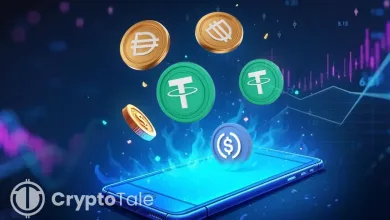Vitalik Buterin’s EIP-7983 Proposes Gas Cap For Ethereum

- EIP-7983 proposes a 16.77M gas cap to enhance Ethereum’s security and performance.
- Most current Ethereum transactions remain under the cap, limiting user impact.
- The gas limit supports zkVMs by requiring large transactions to be split into parts.
Ethereum co-founder Vitalik Buterin and researcher Toni Wahrstätter introduced EIP-7983, a proposal to enforce a gas cap of 16.77 million units on the Ethereum network per transaction. The proposal aims to strengthen network security, minimize denial-of-service (DoS) risks, and ensure better transaction cost predictability.
The amount of gas that a single transaction can utilize within its Ethereum protocol is not capped, and therefore, a transaction can make use of the entire gas limit of a block. This presents a potential vulnerability. As per a single transaction, this would require a lot of computation, may take down the network, and affect its performance. This is solved in EIP-7983, where the individual transactions have a fixed ceiling.
The specific gas cap of 16.77 units or (2²⁴) is designed to accommodate complex contract executions while preserving predictable execution boundaries. The proposal highlights that most of the Ethereum transactions fall well below this threshold, so user and developer impact is expected to be minimal.
Improved Network Predictability and DoS Protection
According to the proposal, setting a per-transaction gas limit would improve Ethereum’s resistance to DoS vectors. These attacks often exploit the absence of gas limits by submitting computationally heavy transactions that delay block processing and affect throughput.
By limiting gas per transaction, EIP-7983 distributes gas usage more evenly across blocks. This helps in avoiding scenarios where a single transaction monopolizes processing resources. The predictable upper bound also allows developers to better model execution costs and build more resilient applications.
The proposal does not affect the total block gas limit, which is still adjustable through the existing consensus process. Only transactions that request more than 16.77 million gas units will be rejected during block validation. This ensures that the gas cap remains enforced at the protocol level.
Enhanced Compatibility with zkVMs
EIP-7983 also aligns with ongoing efforts to integrate zero-knowledge virtual machines (zkVMs) into Ethereum. These virtual machines, which support zk-rollup technologies, benefit from transaction modularity and size predictability. The new cap encourages developers to split large transactions into smaller components, which are more efficient for zkVM proof generation.
Transaction modularity improves parallel execution potential, reduces state bloat, and aligns with Ethereum’s future scaling strategies. As Ethereum explores partial statelessness and other resource-efficient designs, smaller transaction units become increasingly important.
The gas cap proposal is further constructive on previous attempts, including EIP-7825, which aimed at improving determinism on execution. The two plans are concerned with streamlining the base layer of Ethereum and expanding the opportunities to be more efficient on-chain.
Buterin and Wahrstätter added that EIP-7983 is not back-compatible, and transactions above the new limitation threshold might be denied. However, information presented in the proposal indicates that the majority of present transactions are well below the 16.77 million units range. This ensures that the change is non-disruptive to most users and developers.
The level of 16.77 million gas was chosen in order to compromise between performance and complexity. It enables most typical interactions of decentralized finance (DeFi), deployment of contracts, and other high-utility features without having to create new operational risks.
The suggested cap will use the same amount throughout the network, and it does not depend on the preferences of validators or miners. The upper limit makes the block validation rules easy to apply and consistent.
The Development Plan of Ethereum
The proposed EIP-7983 comes at a time when Ethereum is still struggling with competition, as there are other blockchain block players like Solana. Over the last few months, Solana has been beating Ethereum on decentralized application revenue and has had greater trading volume in decentralized exchanges (DEXs).
Related: Vitalik Buterin: The Visionary Behind Ethereum Blockchain
Ethereum innovators, one of whom is Buterin, have admitted that the network needs to be trimmed down to be more efficient. In May 2025, Buterin suggested redesigning the network, termed as the simplification of the protocol components, and decouple the operations. He claimed this would boost security and make it overall more accessible.
The gas cap complements this vision by introducing operational safeguards that improve transaction processing efficiency. It also supports Ethereum’s long-term goal of remaining the leading platform for smart contract execution while minimizing attack surfaces.




